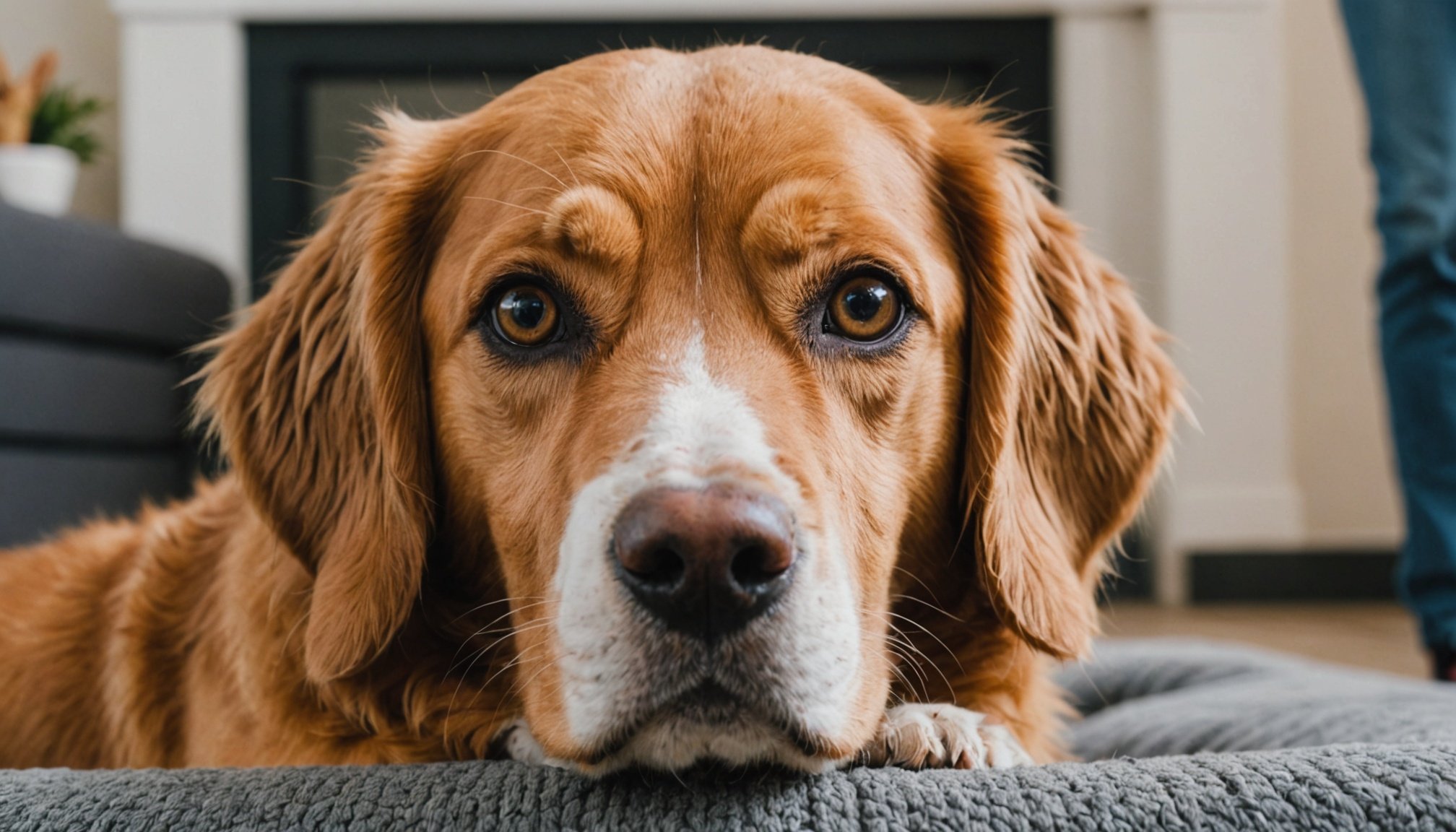Understanding Separation Anxiety in Pets
Separation anxiety in pets manifests as behavioral issues when they are left alone. Pets, especially newly adopted ones, may experience this stress due to fear of abandonment or attachment issues. Recognizable signs of separation anxiety include persistent barking, destructive behavior, and inappropriate elimination indoors. New environments heighten anxiety in adopted pets, as they might recall past traumatic experiences such as neglect or multiple homes.
Common causes of separation anxiety often relate to life changes, like adoption, moving homes, or changes in family dynamics. Pets thrive on routine and stability; thus, sudden shifts can cause distress. Their attachment to humans means that being in unfamiliar surroundings without their presence can be daunting.
Also to discover : The complete handbook for building a strong bond with your new rabbit: essential tips for socialization and happiness
The impact on a pet’s wellbeing is profound. Anxiety can lead to destructive behaviors, excessive grooming, and loss of appetite, affecting their overall health. Not only does it pose a risk to the pet’s mental state, but it can also strain the relationship between the pet and owner. Understanding and addressing these issues with patience and care is crucial. With the right techniques and expert advice, improvement is achievable, providing a happier environment for both pet and owner.
Proven Techniques for Easing Separation Anxiety
When it comes to separation anxiety in pets, there are several established techniques that can make a difference. Understanding these methods can help pet owners manage their pet’s anxiety more effectively.
Also to discover : The complete handbook for building a strong bond with your new rabbit: essential tips for socialization and happiness
Gradual Desensitization
Gradual desensitization is a step-by-step approach designed to acclimate pets to being alone. This involves slowly increasing the duration of time your pet spends by themselves. Begin with very short absences, just a few minutes, and gradually work up. Benefits include reducing fear and anxiety over time, making them more comfortable with extended absences. Consistency is key, along with observing your pet’s comfort level and not progressing too quickly.
Positive Reinforcement
Using treats and praise can significantly aid in alleviating anxiety. Develop a reward system for calm behavior when left alone. This approach reinforces positive associations with being solo. By providing your pet with treats when they appear calm, they learn that being alone can be a positive experience. Ensure rewards are immediate and consistent to strengthen the association.
Establishing a Safe and Comfortable Space
Creating a designated area filled with familiar items, like toys and blankets, provides comfort during separations. This space should be comforting and associated with positive experiences. Integrating calming tools, such as pheromone sprays or anxiety wraps, can further ease stress, making the separation more bearable for your pet.
Expert Advice on Managing Separation Anxiety
For managing separation anxiety effectively, consultation with veterinarians and animal behaviorists is often recommended. These experts can provide personalised insights into your pet’s specific needs. They can assess if your pet would benefit from therapy options, such as behavioural therapy or medication, depending on the severity of their anxiety.
In severe cases, veterinarians might suggest medication as part of a broader treatment plan. This is not a standalone solution but can be valuable alongside other techniques like training and environmental modifications. It’s crucial to work closely with a professional to determine if this is appropriate, as incorrect use can lead to unwanted side effects or dependency.
Effective strategies involve a combination of expert pet advice and practical application. Consistency, patience, and understanding your pet’s cues are key to success. Engaging with professionals also helps in staying informed about the latest treatment options and techniques in pet therapy. Taking this step is essential for both new and long-term pet owners who wish to provide a comforting and supportive atmosphere for their furry companions.
Gradual Separation Techniques
Understanding step-by-step separation methods is essential for managing pet anxiety. These techniques leverage patience and persistence, fostering your pet’s comfort during absences. They are designed to create a calming transition and improve tolerance over time.
Short Departures
Initiate with brief absences to familiarise your pet with being alone. Start with just a few minutes, then gradually extend the time. This gradual acclimation builds confidence in your pet, reducing their fear. Assessing their progress is crucial, adjusting duration based on comfort levels. During this process, maintain a calm demeanour. Leave and return silently to avoid triggering anxiety.
Consistent Routine
Implementing a consistent routine aids in stabilising your pet’s environment. Incorporate predictable alone times into their daily schedule. Pets find security in regularity, associating routine with safety. Even amidst changes, strive to maintain consistency. This can be achieved by keeping mealtimes, walks, and rest periods fixed. Consistent patterns help minimise anxiety by providing a sense of predictability.
By embracing these training methods, pet owners can create a supportive environment, effectively addressing separation anxiety. Establishing structure through gradual separation and routines ensures a balanced, healthier relationship between pet and owner.
Products and Resources to Support Adjustment
Finding the right pet calming products is crucial for easing separation anxiety. Numerous options exist, each offering unique benefits for soothing anxious pets. Pheromone diffusers, for instance, release synthetic pheromones that mimic a mother’s scent, promoting a sense of security. Additionally, anxiety wraps apply gentle pressure to the body, providing a calming effect akin to a soothing embrace.
Incorporating technology, there are apps and tools available to assist in pet training and behavior tracking. These applications help monitor your pet’s progress, allowing you to adjust techniques as needed. Some offer features like calming melodies or interactive games, which can engage and distract pets during periods of separation.
For those looking to expand their knowledge, several valuable resources and reading materials are available online. Books and articles offer insight into understanding common pet issues and provide strategies for addressing them. Engaging with these resources enhances your comprehension and equips you with effective approaches to manage anxiety.
Exploring these options ensures a comprehensive understanding and application of aids, contributing to your pet’s emotional well-being and creating a supportive environment for adjustment.
Common Concerns and FAQs
Navigating separation anxiety can be daunting, and pet owners often have many questions. Here, we address some frequently asked questions to clarify common pet issues related to separation anxiety.
How can I tell if my pet is experiencing separation anxiety?
Pets with separation anxiety exhibit behavioral issues such as excessive barking, destructive tendencies, and urinating indoors when left alone. It’s vital to differentiate these signs from general boredom or occasional misbehaviour by noting if they consistently occur when the pet is alone.
Is separation anxiety more common in adopted pets?
Yes, adopted pets are often more prone to separation anxiety due to past experiences with abandonment or neglect. Adjusting to a new home can also be challenging, amplifying their anxiety.
What misconceptions exist around separation anxiety and pet behaviours?
A common misconception is that these behaviours are solely due to lack of training rather than emotional distress. Understanding that separation anxiety is a complex condition can guide owners to address it more compassionately.
When should I seek professional help?
If anxiety persists or worsens despite attempts to alleviate it with traditional methods, consulting with veterinarians or animal behaviourists is crucial. These professionals can provide insights and adapted strategies for managing more severe cases.











